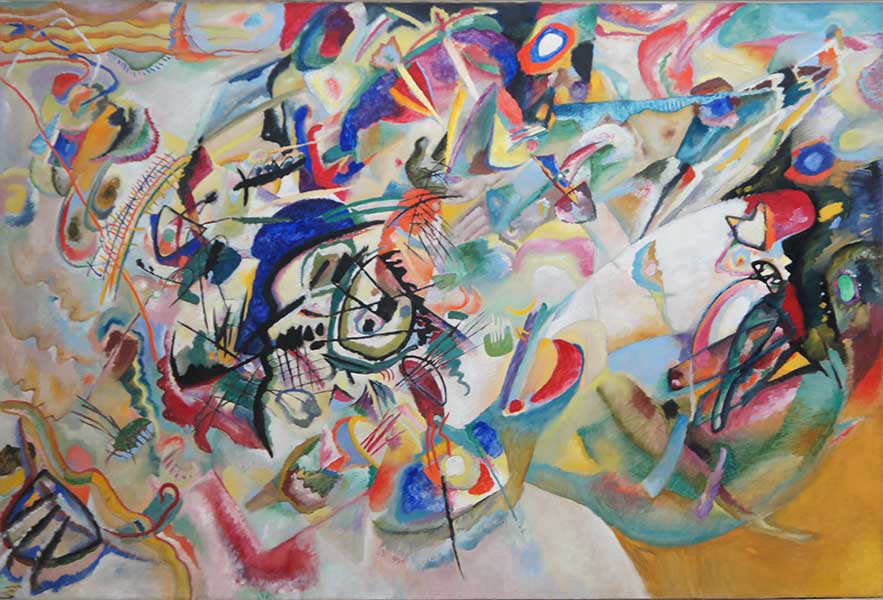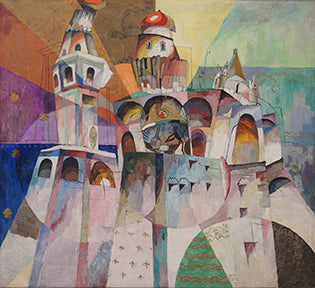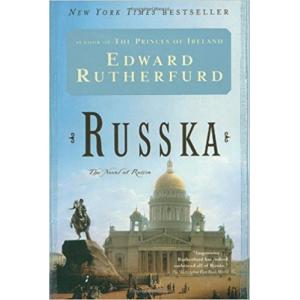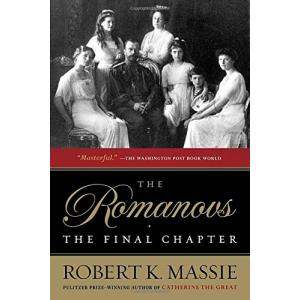Artistic Gems in Moscow
by Cathy Locke

After many trips to Russia I have to say that Moscow has become one of my favorite places to visit in the world. Although it is a huge metropolitan city, at its very center is an old city with a very intimate feeling. When you walk around the old sections of Moscow, you will see beautiful architecture and artistic gems everywhere. Clearly the inhabitants of this city have loved it for centuries. The old section of Moscow holds the very soul of its people and you can see that great care has been taken to create spiritual retreats and breathtaking masterpieces. There is something very special to the artist inside of me to be able to see the hand of Russia’s artists everywhere. By walking these streets, seeing these sites, you really get a sense of the lives of these artists. In keeping with the holiday season, I thought I would take you on a journey of these special places in Moscow. Perhaps you too will see why I love going there so much.
On the first day in Moscow,
you will really love to see:
St. Basil’s Cathedral,
with its ten candles burning.
Built from 1555-1561, on the orders of Ivan the Terrible, St. Basil's Cathedral has become a world famous landmark. The original building contained eight churches all built around the central Church of Intercession. The tenth church was erected in 1588 over the grave of the venerated (but some what crazy*) local Saint Basil. Above each of the ten churches is a column that holds an onion dome. These domes represent the flame of a candle. The entire building was designed to be a bonfire rising into the sky. Under each of the domes, inside the cathedral, is a small intimate room of worship with an alter designed with great care to reflect a different region of Russia.
* I say some what crazy, because the Saint did not enjoy wearing clothes, no matter the weather he was seen around Moscow completely nude! In fact his title while he was alive was “Basil Fool for Christ,” it was changed when he was canonized around 1580.
On your second day in Moscow,
you will really love to see:
One of the world’s busiest subways
inside a luxurious underground palace.
The Moscow Metro was one of Stalin’s “glorification” projects and thus became one of Russia’s most extravagant architectural wonders. The concept was to pay the people of Russia for all their hardships of war by creating luxurious “palaces for the people.” Stalin directed his architects to design structures which would encourage citizens to look up, admiring the station’s art, as if they were looking up to admire the sun, and by extension him as a god. With their marble walls, high ceilings, stain glass masterpieces and grandiose chandeliers, the Moscow Metro will take the average westerner totally by surprise. The artwork includes bas-reliefs, friezes, marble and bronze statues, stained-glass windows and countless mosaics made with glass, marble and granite. Inside of Revolutionary Tunnel sits a beloved statue of a dog. Not just any dog, but one with magical powers. By “rubbing his nose just right”* you will be granted your wish.
*The “rubbing method” is disclosed on my tour, but be careful what you wish for!
On your third day in Moscow,
you will really love to see:
Moscow’s Art Nouveau architecture
a visual fantasy of floral inspired designs.
During Russia’s Silver Age (1890-1917) Moscow was thriving and its wealthy merchants were embracing the new European styles of Art Nouveau and Art Deco architecture. Just spend an afternoon walking around the city and you will see some beautiful examples of houses, gates, entryways and fences. Maxime Gorky’s house is probably the most famous example of Art Nouveau in Moscow. Described as a visual fantasy with its sculpted doorways and staircase, murals, stained glass and beautiful tile designs. You will also enjoy the inside of the Metropol Hotel located on Red Square; with its glass elevator of floral inspired flowing curves to the hotel’s huge glass ceiling in their main restaurant.
On your fourth day in Moscow,
you will really love to see:
Home to the unicorn and firebird,
the Marfo-Mariinsky Convent.
The small cultural gem known as Marfo-Mariinsky Convent is perhaps Moscow's spiritual center. The funding for construction came from the Grand Duchess Yelizaveta Romanova, whose husband, Grand Duke Sergeii Alexandrovich, was murdered by a terrorist in 1905. It was her wish to establish a safe retreat for women. After her husband’s death she gave away her magnificent collection of jewels and other valuable possessions. With the proceeds, she opened the Convent and became its abbess. Her vision was to begin a religious community, made up of women from all social strata. There are two structures on the grounds, the Church of Saints Martha and Mary and the Holy Protection Cathedral. Both were designed by Aleksey Shchusev and built from 1908 to 1912. The architecture of both structures is a mix of Art Nouveau and medieval Novgorod design. The interiors contain frescoes and mosaics by Russian artists Mikhail Nesterov (1862 -1942) and Pavel Korin (1892-1967). Not only is this a place of peace and spirituality; it is also a remarkable work of art. The smaller church, Church of Saints Martha and Mary, was decorated primarily by Mikhail Nesterov. Nesterov's touch ranged from the lighthearted whimsical flowers and tree branches, to murals filled with symbolism. He primarily used shades of blue and gold, which gave his images a sense of a deep quiet spirituality. Nesterov employed traditions of Russian folklore in his murals and decorative designs. For example a bas-relief on the church's exterior sidewall features images of a unicorn and the traditional Russian Firebird.
About the Author
Cathy Locke is an award-winning fine art painter, professor, and published writer, specializing in Russian art of the 19th and 20th centuries. She is the editor of Musings-on-art.org.
Cathy Locke’s artwork – www.cathylocke.com





















































































